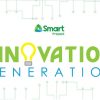The global lockdown amid the ongoing pandemic has greatly affected the education sector and has triggered disruptions in the way classes are held this school year.
In the Philippines, education officials said that educational institutions will embrace the distance learning approach to ensure that learning among students in all levels remains unhampered. It will also ensure the safety of the students as the country struggles with the health crisis.
In a distance learning set up, the interactions happen between the educators and students who are geographically remote from each other during the actual instruction. While distance learning is not a new concept, some recent definitions focus more on it as a new development that requires not just massive technical adjustments but also changes in the way learning institutions will need to operate in general.
Challenges amid Distance Learning
For Vertiv, a global provider of critical digital infrastructure and continuity solutions, distance learning underlines the importance for educational institutions to leverage technology in order to thrive even in the face of the COVID-19 pandemic.
Nowadays, schools, universities, and colleges, which used to only conduct traditional face-to-face classes, are faced with numerous challenges, especially in having to equip educators and students with the tools needed to enable distance learning.
Educational institutions need to ensure the availability of the schools’ IT network for educators to access student information, such as enrollment, class records, among others, even when they are not physically present in the campus. They also need to ensure the accessibility of its IT systems to make modules and other learning materials available for the teachers.
In public schools, for instance, learning references can be accessed by educators, parents, and students using DepEd Commons, a project of the Department of Education (DepEd) aimed at supporting the continuous delivery of basic education to Filipino learners through open education resources (OER).
Apart from the platforms, learning institutions must also ensure that they can support mobile learning. This refers to learning across multiple contexts, through social and content interactions using personal electronic devices.
In mobile learning, virtual classes can be more engaging for students, especially that distance learning can be very solitary and didactic when teachers just ask their students to watch videos, read documents or click on presentations.
“Educators must have the capability to innovate and experiment with available online tools to make virtual classes more engaging. In recent years, modern classrooms have been harnessing the power of technology to equip their learning facilities with necessary digital tools not just to support the teaching-learning process but also to provide a more interactive learning experience, especially for distance learning approach,” said Jason Lim, country manager of Vertiv Philippines.
Empowering the education sector
Despite the benefits that these innovations bring, digital transformation in schools is not always easy. A typical campus, for instance, would have multiple buildings connected to the same network, usually managed only by a small IT team. Since most of the staff members, teachers, and students, are working remotely, the visibility, access, control, and management of all IT assets is extremely challenging for the IT managers.
Furthermore, these assets must also be protected in its entirety, from hardware to software. With the increasing personal information stored online, as well as personal devices connected to the IT network, IT managers must ensure that sensitive student information is protected against cyberattacks and other threats.
To help schools tackle these challenges, Vertiv has been innovating solutions that can help empower the education sector. With its range of uninterruptible power supply (UPS) solutions, Vertiv helps ensure the availability of the school’s critical data center, so access of vital records online remain unhampered. In addition, its range of data center infrastructure management (DCIM) solutions allow IT managers to monitor the school’s IT infrastructure even when they are not there, physically.
CONTINUE READING…












